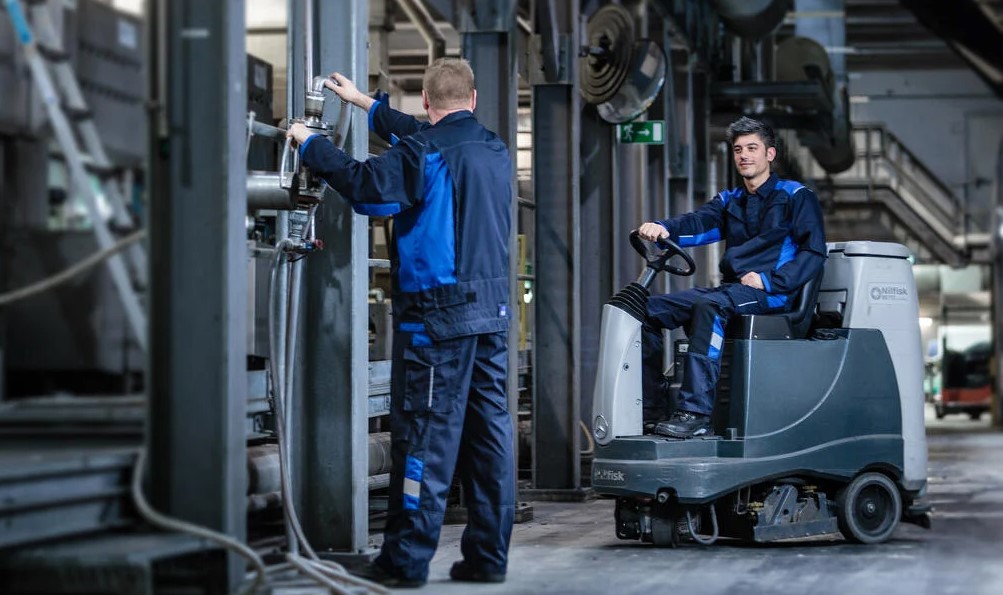Technology has given humans many life-changing moments. These might be having a touch screen gadget in palms or a technology-impacted rise in business revenues. The list never stops as advancements in technology are pacing at an enormous speed. One of the most innovative things in this technological world and cycle is the Internet of Things (IoT).
The term refers to an interlinked group or network of devices, sensors, things, digital systems, and technology that exchange and communicate data/information among themselves. Over the years, usage of IoT has grown in every dimension and field at a rapid pace. Several industries and agencies have benefitted from this system in many direct and indirect ways
But, one of the most common fields that utilize and apply the concept of IoT is business. Today, be it Human Resource management, marketing, decision making, logistics, the Internet of Things has made everything possible.
Businesses are nowadays using this system extensively in their operations and Logistics area. Moreover, the results show tremendous growth in the activities of companies that use IoT in logistics. Therefore, it is crucial to look at the vital uses and applications of IoT Logistics.
5 Usages of IoT in Logistics By Big Companies
Logistics, in simple words, means the distribution of goods or services from the point of origin or source to the point of delivery. It mainly includes – procurement, warehousing, order processing, packaging, and transportation in final delivery, among many other functions & sub-functions.
Today, many big companies like Walmart, Amazon, and Google are nothing without technology. They use IoT to minimize the workload and maximize the output. For achieving this aim, these companies depend on IoT in their logistics department. From live tracking to record-keeping, there are numerous applications of technology that big companies survive on. These uses are mentioned hereunder.
1. Safety & Security At Prime

Companies have started using connected applications and systems to provide complete security to the workers. These interlinked applications regulate the entry and exit of the personnel working in a warehouse or factory.
This helps keep an eye on the whole warehousing function. This results in having complete control over any outsider’s entry. Companies with colossal operation bases use this as an anti-theft measure. This safeguards against the loss of output caused by any uncertain event.
These connected applications can be found at several places in the form of connected CCTVs, asset tracking logistics systems, etc. Using such applications, a warehouse manager can easily block the entry even from a remote location.
2. Maintains Employee Safety

In big companies, there are thousands of operations that run regularly on a daily basis. Various types of machinery are used for processing, packaging, and transporting products. It might be possible that an inspector (if any) cannot identify ill-functioning or wear & tear of machinery. Defective machinery can not only lead to delayed processes but can also cost employees their lives.
IoT solves this problem by providing sensor technology. These sensors raise the response time to such defects or machinery malfunctioning. These devices quickly identify the problem, give an alert and signal the manager. The manager responds to the alerts by calling an ambulance or taking a precautionary step.
3. Smooth Locating and Tracking of the Products

Transportation acts as a primary role in the whole logistics process. It is the one that delivers the goods from the source to the final destination. It is required at two stages. Firstly, to carry goods from the factory to the warehouse. Secondly, from warehouses to the retail stores or the final consumers.
Proper execution of IoT in transportation leads to transparency in the whole logistics function. The interconnected devices help the managers and specialists trace the product’s location.
It helps estimate the total time wasted in unnecessary activities between the source and destination. It acts as a binding and coordinating force in operations by coordinating all the sub-functions of logistics.
Moreover, live tracking from warehouse to customer’s doorsteps is a feature that has gained prominence over time. This helps in attaining customer loyalty and improved brand image. These devices are barcode readers, RFID tags, Data Matrix codes, etc. The digital identity of the product is unique and can easily be traced all along the route.
4. Handling of Operations

The Internet of Things has impacted the logistics industry in small ways. It aids businesses in checking how the actual logistics process is working. Companies can evaluate various factors using technology and the internet.
Managers can make petty decisions based on information delivered through technology. This information can be the number of semi-finished and finished goods in the godown, the temperature of the storage room, environmental conditions during delivery intervals, the efficiency of the employees, etc. This will help managers analyze, evaluate and frame different policies and terms.
5. Enhancing Final Delivery

Today, everyone is aware of how powerful GPS tracking is. It assists in speedy shipping. The AI technology helps in reaching the farthest unknown location. It can facilitate the delivery man by getting real-time information about the weather changes and the road blockages.
The automatic order processing indirectly helps reduce the final shipping costs as the number of workers in charge of shipping decreases drastically. IoT not only helps in reducing the shipping & transportation costs but also lowers the overall operating cost with less workforce requirement.
Conclusion
In the 21st century, almost every startup has begun to rely on the Internet of Things. Cloud computing and managing payment-receipt systems on powerful computers have become very common at workplaces.
Today, systems and devices like inventory racking systems, predictive analytical & decisions management systems, location management devices, products delivery through drones, automated vehicles, etc., are natural sights.
Machine, automation, and technology usage can reduce errors caused by manual working systems. Businesses have created a web of technology not only for meeting logistical objectives but also to create a secure bubble for transactions. In other words, IoT has given aid to the business objective of customer retention and loyalty.

